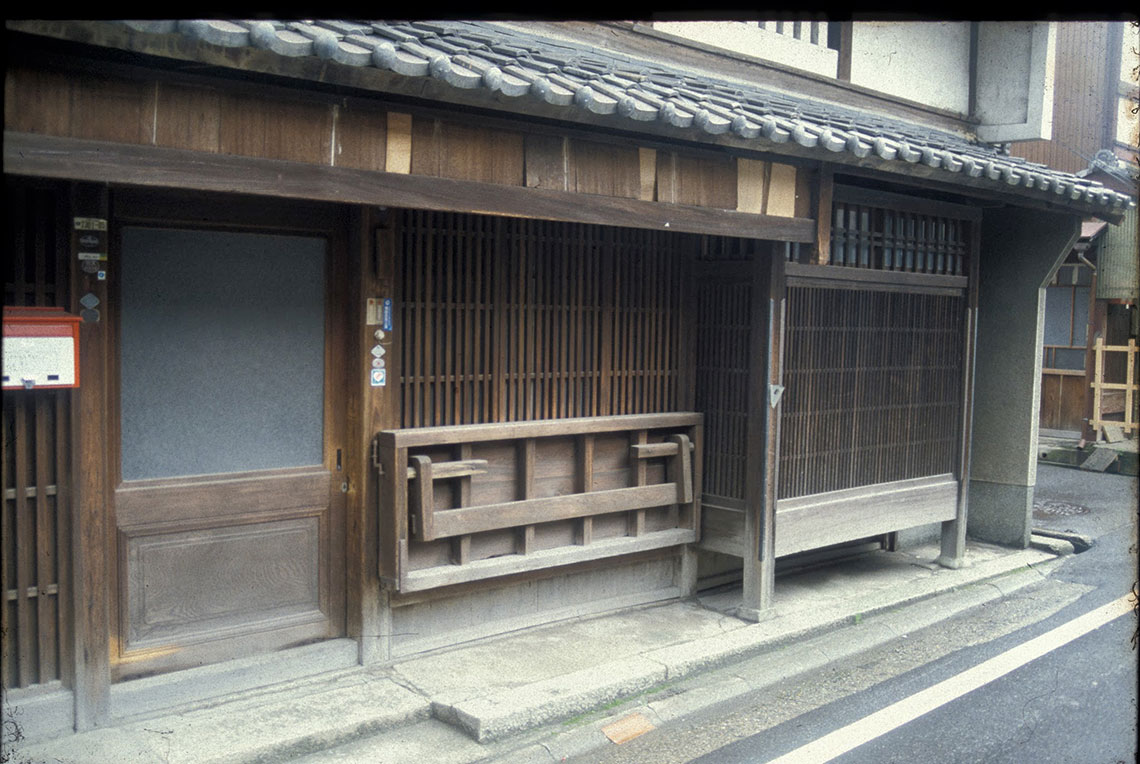Otsu today (pop. 260,000) is the thriving commercial and administrative capital town of Shiga prefecture. Although the center is dominated by the Prefectural Government Offices, high-rise office blocks, and hotels, the old highway follows what appears to be a narrow backstreet where much of the former charm of this post-town is maintained. The road is lined with small restaurants (which thrive on the busy lunchtime trade for shop and office workers), open-fronted shops, and small craft workshops. Interesting relics from the days when weary travelers sought to rest their feet awhile are the folding wooden benches (called shogi) still attached to the front of many houses and former inns in this area.
The traveler may hardly notice passing from Otsu to the next town of Zeze since the road is lined continuously with old houses and small shops. Zeze was the site of a castle in the Edo period, and although no trace remains today of the castle buildings, the street pattern still follows the layout of the original castle town. Thus, where the Nakasendo entered the town through a gate in the old castle walls, the road still traces a double set of right-angled turns known as a dog-leg (masugata). This was a device to confuse potential attackers and to expose their flank to fire from defenders. Nowadays it still serves to confuse car drivers unfamiliar with the town.
Leaving Zeze through another ‘dog-leg’, the sides of the road open out into rice fields. For a while the road is lined with pine trees, reminiscent of the namiki which, in the past, marked the line of the highway and offered shade to travelers. Nearing Seta Bridge the road passes through another built-up area. This is the town of Ishiyama, which developed only after the 1920s when a railway station was opened to serve two new textile factories there. In fact the station was built on top of the old Nakasendo, forcing a slight realignment of the route.


